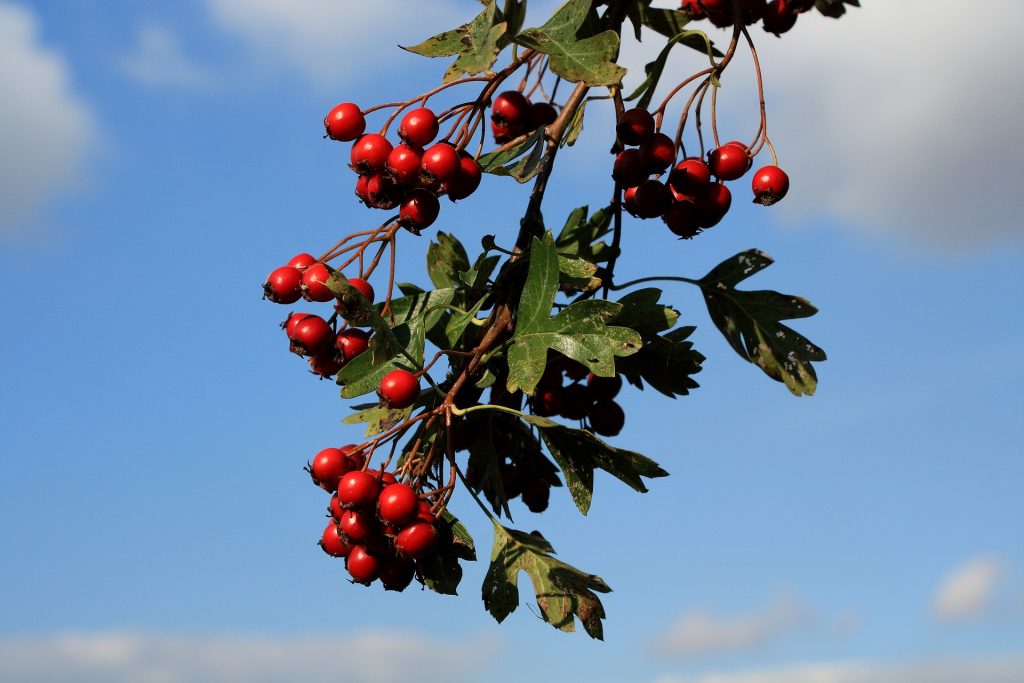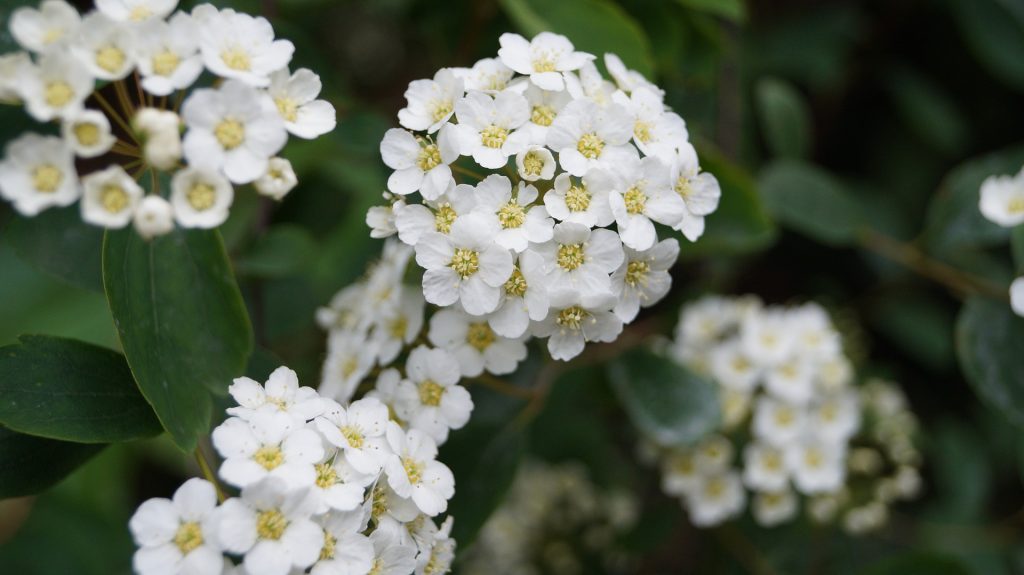 Hawthorn (Crataegus) is also commonly called thornapple, May-tree, white thorn or hawberry. Hawthorn is a group of trees that belong to the Rosaceae or rose family. Hawthorn is native to Northern temperate regions and has a very wide distribution. In Europe, common hawthorn (Crataegus monogyna) is the predominant form, and is characterised by its lobed leaves, is white blossom and its distinctive red berries. The flowers of hawthorne are produced in late spring, and these develop into small red fruits called haws. The leaves, fruit and flowers of hawthorn are edible, and they have been used in traditional medicine due to the nutrients they contain. In particular hawthorn fruit is high in antioxidants including epicatechin, hyperoside, and chlorogenic acid. The flowers contain high levels of vitamin E (tocopherols), ascorbic acid and essential fatty acids. The high antioxidant content of the leaves, flowers and berries may explain the health benefits attributed to consumption of the hawthorn pant.
Hawthorn (Crataegus) is also commonly called thornapple, May-tree, white thorn or hawberry. Hawthorn is a group of trees that belong to the Rosaceae or rose family. Hawthorn is native to Northern temperate regions and has a very wide distribution. In Europe, common hawthorn (Crataegus monogyna) is the predominant form, and is characterised by its lobed leaves, is white blossom and its distinctive red berries. The flowers of hawthorne are produced in late spring, and these develop into small red fruits called haws. The leaves, fruit and flowers of hawthorn are edible, and they have been used in traditional medicine due to the nutrients they contain. In particular hawthorn fruit is high in antioxidants including epicatechin, hyperoside, and chlorogenic acid. The flowers contain high levels of vitamin E (tocopherols), ascorbic acid and essential fatty acids. The high antioxidant content of the leaves, flowers and berries may explain the health benefits attributed to consumption of the hawthorn pant.

Once the flowers are pollinated, they produce distinctive red berries called haws. These can be eaten raw, although the seeds contain high concentration of cyanide. If the individual does not want to consume this, they can simply spit out the seeds.

Hawthorn (Crataegus monogyna) is easily identified by its distinctive clustered white flowers. After the flowers have turned to berries, the plant can still be easily identified from the highly lobed leaves. The leaves contain a number of flavonoids including rutin, vitexin, vitexin-2’-O-rhamnoside, and hyperoside. The leaves also contain a number of analogues of di-C-glycosylapigenins. The leaves from the top of the tree contain more flavonoids that those further down the tree. The leaves also contain triterpenoids, a group of phytochemicals that may have effects on the central nervous system.
Eat Well, Stay Healthy, Protect Yourself
RdB
